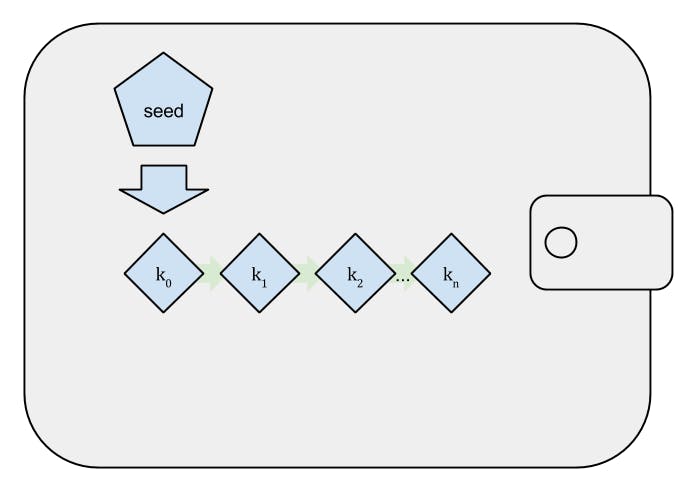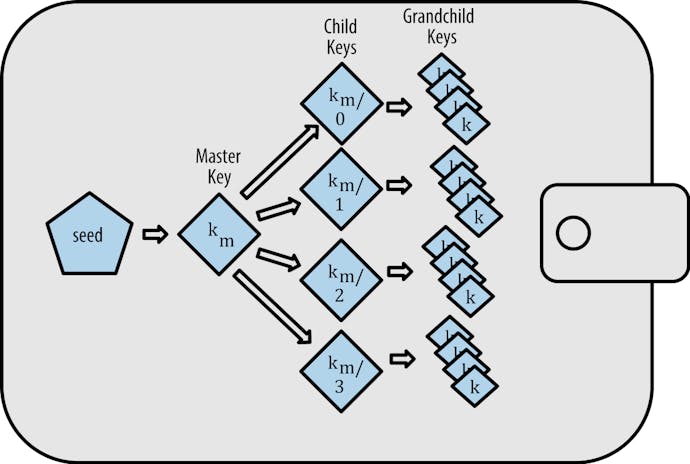Navigating the Bitcoin Improvement Proposals (BIPs)

Exploring the Evolution of Bitcoin: A Comprehensive Guide to BIPs and Key Concepts in Digital Currency Innovation
Bitcoin, the revolutionary digital currency, operates on a foundation of constant innovation and improvement. Central to this evolution are the Bitcoin Improvement Proposals, or BIPs, which are instrumental in shaping the features and functionalities of the Bitcoin network. In this journey through the world of BIPs, we'll explore some key concepts, including BIP32, Base58, BIP39, BIP44, and BIP174, unraveling their significance in a manner that's both informative and easily accessible.
BIP32: A Structured Approach to Key Management
At the heart of Bitcoin lies the concept of keys - the secure credentials that grant access to your digital assets. BIP32, or Bitcoin Improvement Proposal 32, introduces a groundbreaking method known as a Hierarchical Deterministic (HD) wallet. Imagine having a master key that acts as a wellspring, capable of generating numerous other keys. This hierarchical structure offers a myriad of benefits, from enhanced security and privacy to streamlined key management. It ensures that each new key is generated in a predetermined, deterministic way, enabling efficient backup and recovery. For an additional layer of security, escrow services can be integrated into HD wallets, to offer enhanced protection for crypto transactions.
Example: Think of your HD wallet's master key as the ultimate key that holds the power to create many smaller keys. Just like a tree with branches, your master key is the trunk, and from it, you can grow branches of child keys. Each branch represents a different address you can use to manage your Bitcoins. This hierarchy is a bit like having your own secret key factory. Say you're a Bitcoin enthusiast who loves to support your favourite artists by buying their artwork. With an HD wallet, you can create a new branch of child keys just for art-related transactions. This keeps your art investments separate from your other Bitcoin activities, adding an extra layer of organization and privacy to your financial world.

Base58: Simplifying Complex Numbers for Humans
When it comes to representing long strings of numbers in Bitcoin, Base58 takes centre stage. This binary-to-text encoding scheme simplifies lengthy data into a format that's more human-readable and less prone to errors. By excluding visually ambiguous characters, such as '0', 'O', 'I', and 'l', Base58 minimizes the risk of typos. This encoding technique finds its applications in Bitcoin addresses, private keys, and other critical identifiers, thereby enhancing the overall usability and robustness of the Bitcoin ecosystem.
Example: Imagine you've decided to share your Bitcoin address with a friend so they can send you some cryptocurrency. This address is a long string of characters that represent your digital mailbox in the Bitcoin world. However, typing out this complex string can be error-prone, especially if it includes characters that look similar. Here's where Base58 comes in. It transforms the long string of numbers and letters into a much shorter and more manageable code that's composed of only easily distinguishable characters. Think of it like translating a complex password into a more memorable phrase. So, when you share your Bitcoin address encoded in Base58, you're not only making it more user-friendly but also reducing the chances of mistakes that could lead to lost transactions.
BIP39: The Mnemonic Magic of Secure Keys
BIP39, or Bitcoin Improvement Proposal 39, introduces an ingenious protocol that brings a human-friendly twist to generating secure keys. Think of it as creating a secret code using a series of everyday words that you can easily remember. Now, here's where the magic happens: BIP39 takes this seemingly simple code and transforms it into a powerful cryptographic seed. This seed becomes the foundation for generating a whole hierarchy of keys through the BIP32 method we discussed earlier. But that's not all—BIP39 adds an extra layer of security by incorporating checksums. These checksums act like spell-checkers for your key, helping to catch any errors that might occur during the process. This means you can safely back up your keys and rest easy knowing you can recover them accurately. Thanks to BIP39, dealing with complex keys becomes as straightforward as using a mnemonic sentence composed of everyday words. This innovation ensures a perfect blend of security and user-friendly accessibility, making the world of Bitcoin more inclusive and safer for everyone.
Example: Let's say you want to secure your Bitcoin wallet with a strong key. Instead of dealing with long strings of numbers and letters, BIP39 lets you choose a set of easy-to-remember words. For instance, you might select words like "cat," "tree," "river," and "sun." These words are then turned into a cryptographic seed that forms the basis of your keys. This makes it easier for you to back up and recover your keys when needed, all while keeping your investments secure.
BIP44: Navigating the Key Hierarchy with Precision
An HD wallet's journey through its hierarchy of keys is guided by the standardized format of BIP44. This format defines the path to follow, ensuring consistency across different wallets. From the master node to purpose fields, coin types, account indices, and address indices, each component plays a role in shaping the final key. BIP44 provides the roadmap for generating keys that align with their intended purposes, whether for managing different cryptocurrencies or maintaining distinct accounts. This standardization facilitates compatibility and enables efficient management of keys within the Bitcoin ecosystem.
Example: Imagine you're using an HD wallet to manage both Bitcoin and Litecoin. BIP44's standardized format guides your key hierarchy. Starting from the master node, the purpose field (44' for Bitcoin, 2' for Litecoin) defines the coin. The account index organizes different accounts, like "Savings" and "Trading." The address index pinpoints a specific address. This format ensures consistent key generation, enhancing compatibility across wallets and making cryptocurrency management seamless within the Bitcoin ecosystem.

BIP174: Teamwork and Security in Bitcoin Transactions
In the realm of complex Bitcoin transactions, BIP174 emerges as a beacon of collaboration. This Bitcoin Improvement Proposal introduces the Partially Signed Bitcoin Transaction (PSBT) format, a standardized way for multiple parties to contribute to the creation, signing, and broadcasting of a Bitcoin transaction. With PSBT, different parties can seamlessly add their inputs, signatures, and metadata to the transaction, ensuring both security and flexibility. From multisignature wallets to CoinJoin transactions, BIP174 fosters cooperative solutions in the ever-evolving landscape of Bitcoin transactions.
Conclusion:
Bitcoin Improvement Proposals form the cornerstone of Bitcoin's ongoing transformation. BIP32, Base58, BIP39, BIP44, and BIP174 each contribute to enhancing the functionality, security, and user-friendliness of the Bitcoin network. By simplifying key management, encoding data for readability, and enabling collaborative transaction processes, these concepts showcase the continuous innovation that drives the Bitcoin ecosystem forward. As we continue to explore the vast landscape of cryptocurrency, these fundamental BIPs will undoubtedly play a pivotal role in shaping its future.
Keep an eye out for our follow-up article, where we will explore the SegWit and Taproot upgrades to the Bitcoin network, and discuss how it all fits together to improve transaction capacity, fees, privacy and security.